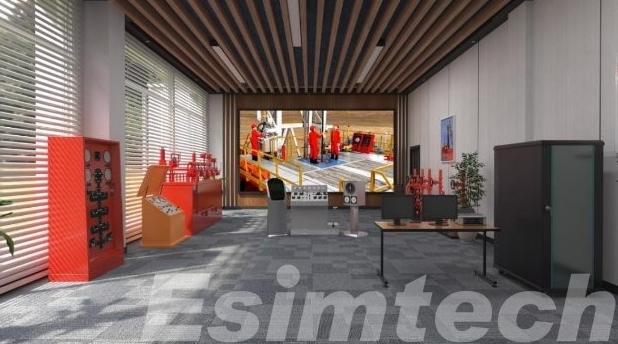How Workover Simulators Train Crews for Safe and Efficient Operations

In the oil and gas industry, well intervention, also known as a workover, is a crucial process for maintaining production and extending the life of a well. But these operations involve complex procedures and potential risks. Enter workover simulators – cutting-edge training tools that equip crews with the skills and knowledge needed to navigate well interventions with confidence.
Why Simulate Workover Operations?
Traditionally, workover training relied heavily on on-the-job learning, which can be time-consuming and carries inherent safety risks. Simulators offer a safe and controlled environment for crews to:
Practice Procedures: Simulators allow crews to familiarize themselves with the equipment, tools, and step-by-step procedures involved in various workover operations. This can include tasks like wellbore cleanout, artificial lift installation, and pressure control.
Master Decision-Making: Simulators can present crews with realistic scenarios that mimic real-world challenges, such as equipment malfunctions or unexpected downhole conditions. This allows them to practice critical thinking, troubleshoot problems, and make sound decisions under pressure.
Sharpen Communication Skills: Workover operations require effective communication between crew members on the rig floor and those in the control room. Simulators can introduce scenarios that test communication protocols and highlight the importance of clear and concise information exchange.
The Simulator Advantage: A Multifaceted Approach
Workover simulators offer a multitude of benefits for training crews:
Realistic Simulations: Modern simulators replicate real-world workover environments, including visual displays, realistic controls, and haptic feedback that mimics the feel of operating downhole tools.
Immersive Learning: The immersive nature of simulators allows crews to fully engage with the training experience, enhancing knowledge retention and promoting better decision-making in the field.
Customizable Scenarios: Simulators can be programmed with various wellbore conditions and potential complications, allowing crews to train for specific workover scenarios they might encounter.
Performance Evaluation: Simulators can track crew performance, pinpoint areas for improvement, and provide targeted feedback to optimize training effectiveness.
Beyond Safety: Efficiency Gains Through Simulation
The benefits of workover simulators extend beyond safety. By honing their skills and practicing procedures in a simulated environment, crews can:
Reduce Operational Time: Well-trained crews can perform workover operations more efficiently, minimizing downtime and maximizing well productivity.
Optimize Resource Allocation: Simulators allow crews to experiment with different approaches and identify the most efficient way to complete a workover operation.
Minimize Costs: Reduced operational time and fewer complications during interventions translate to significant cost savings for oil and gas companies.
The Future of Workover Training: A Collaborative Approach
Workover simulators are rapidly becoming an essential tool for training well intervention crews. As technology advances, we can expect even more sophisticated simulators with features like:
Advanced Haptic Feedback: Providing a more realistic feel of downhole tools and wellbore conditions.
Virtual Reality Integration: Creating an even more immersive training experience for crews.
Real-Time Collaboration: Enabling crews from different locations to train together on simulated workover scenarios.
By embracing workover simulators, the oil and gas industry can ensure a future of safe, efficient, and cost-effective well interventions. This translates to a more reliable and sustainable energy supply for the world.
- Art
- Causes
- Crafts
- Dance
- Drinks
- Film
- Fitness
- Food
- Παιχνίδια
- Gardening
- Health
- Κεντρική Σελίδα
- Literature
- Music
- Networking
- άλλο
- Party
- Religion
- Shopping
- Sports
- Theater
- Wellness


